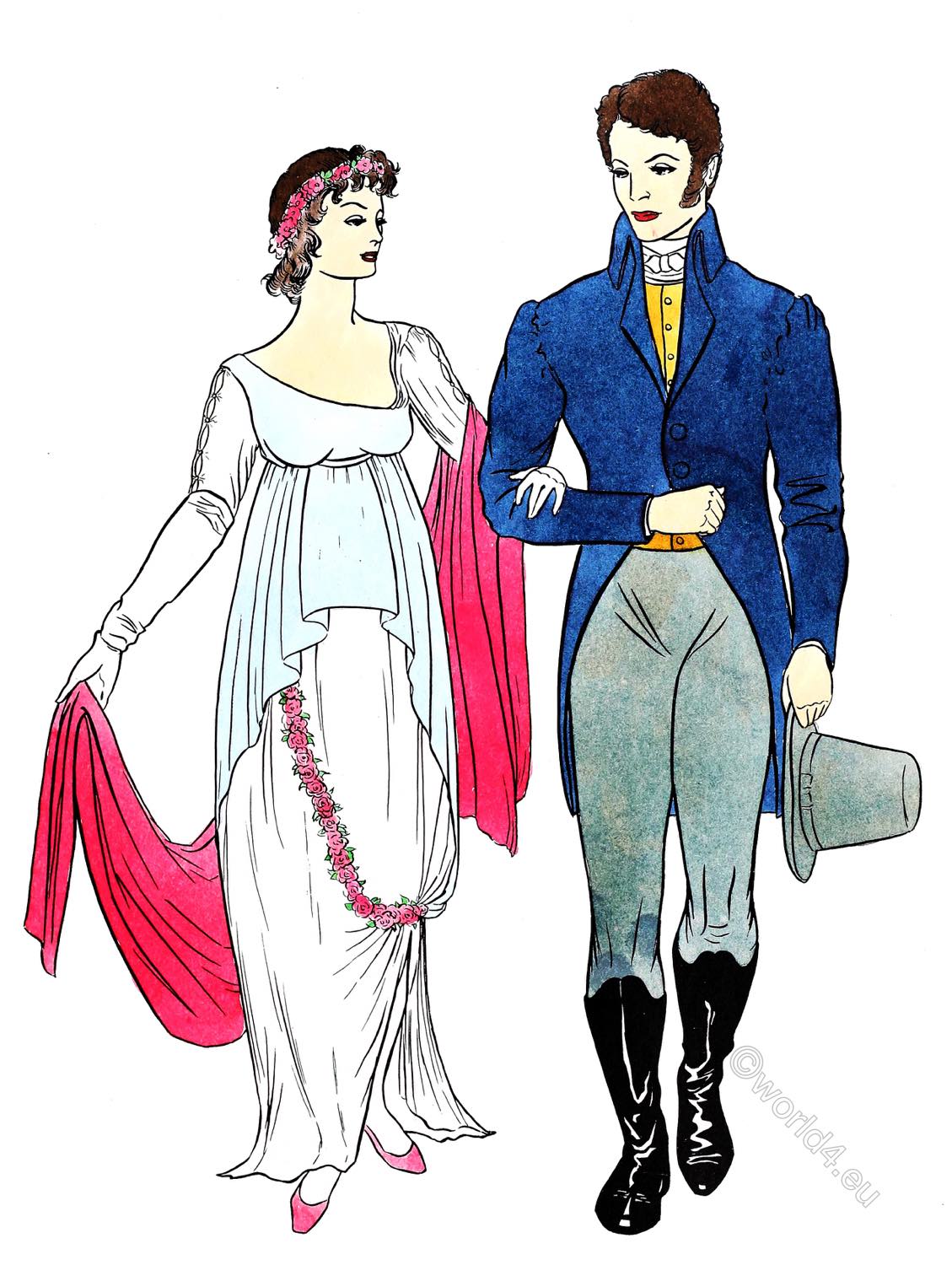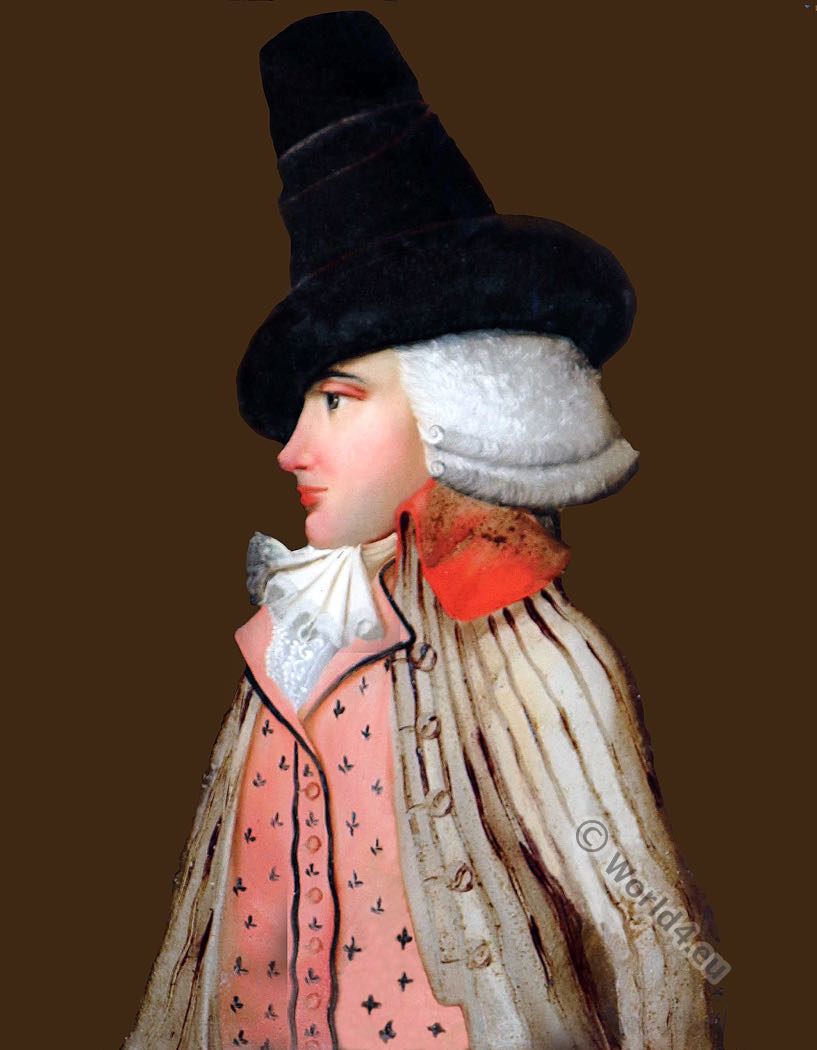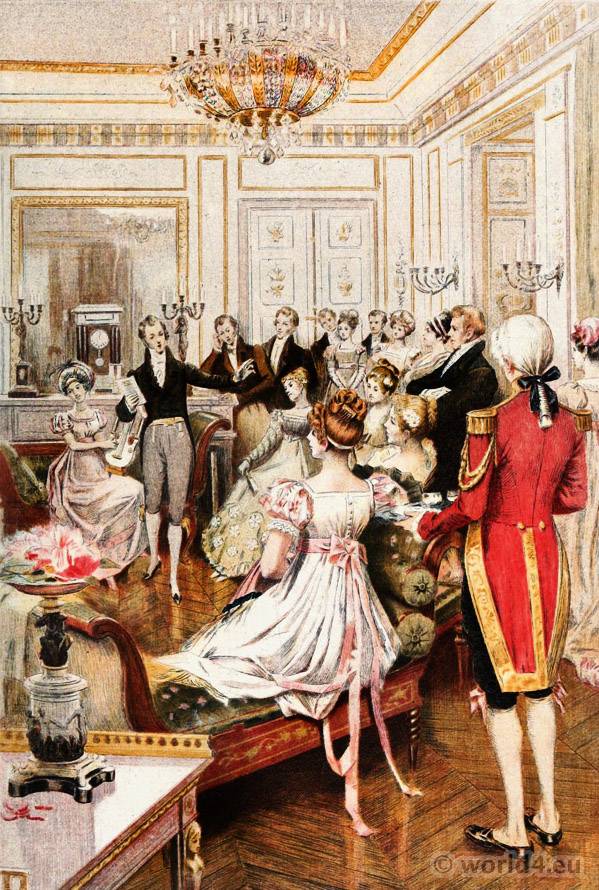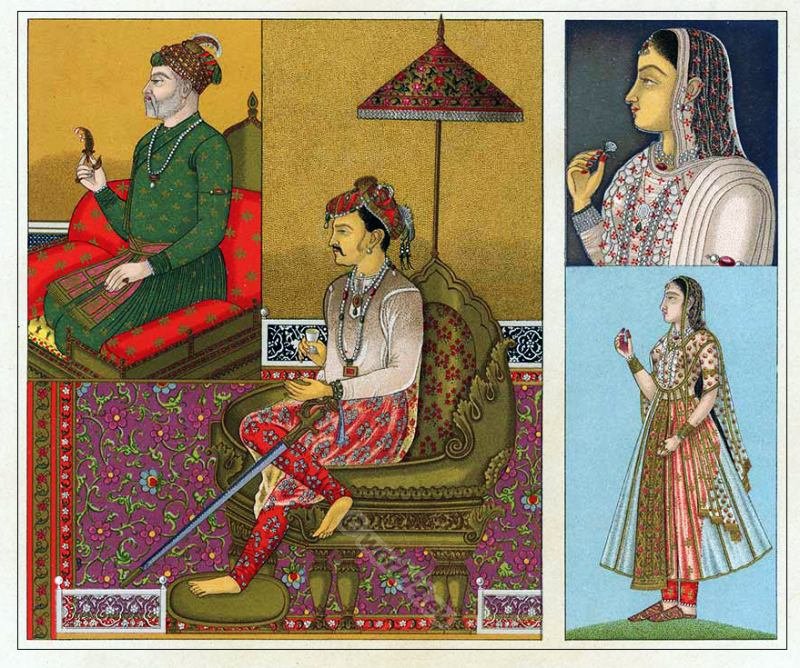
DIRECTOIRE 1789-1800.
PLATE NO. 85
Neoclassical fashion
The young man escorting the classically garbed young woman is dressed somewhat less flamboyantly than his contemporary in Plate 84. His outfit is, however, every bit as modern and novel as that of the Incroyables. His hair shows the growing tendency toward wearing one’s own hair in a natural, close-fitting haircut. The sideburns point the way to the next (19th) century, when almost everyone wore hair on his face. The hair was cut to fit the head closely behind and permitted to grow long in front, where it was combed into a confusion known as the “windblown”.
The coat is the forerunner of the modern “cutaway” observe that it slopes back from a high waist and has coat-tails of the same type as in Plate 84. The collar, though not as high, is of the same type as that worn by the Incroyables. Notice the gathering at the shoulders. This coat was very prob- ably made of broadcloth. The cravat, too, is like the one seen in Plate 84, only it is less exaggerated. The waistcoat is a simple, single-breasted, square-front garment. The trousers are an early example of the new, long type that came in at that time. They are made of a knitted fabric and reach to mid-calf, where they fasten with buttons. To insure smooth fit, the openings are on the side a little to the front, much like sailor-pants.
The hat is likewise an innovation. It is the forerunner of the 19th century top hat. It is made of brushed beaver, has a small band and buckle, narrow curling brim, and a medium-high tapering crown. The boots are the type known as the “Wellington”. It was a common form of footgear during the Directoire. Made of black calf or kid, they came up in a point almost to the knee and tapered behind to the calf.
The rather attractive young woman in the plate is wearing a Greek Ionic creation of the late 18th and early 19th centuries. The coiffure, too, reflects a careless simplicity that is surprisingly attractive.
The costume consists of two garments, and is at best a very poor imitation of true Ionic. The outer piece has undoubtedly been cut to fit as it does, instead of depending upon draping. The rose chain has been pinned to one corner of the outer garment and the other end tucked under the girdle in front.
Notice the Ionic-effect sleeves of the undergarment (see Plate No. 1O), and the thin, transparent quality of the material. It was customary of the women during the late Directoire and early Empire to wear clothes of such light material as to jeopardise their modesty and endanger their health.
The full-length gloves and soft slippers lend a contemporary quality that further weakens the classical likeness of the style, but they do not, on the whole, impress one as being out of place. The soft shawl was as useful as it was ornamental, when one considers the discomfort of spending a chilly evening in such a dress.
Source: Museum Extension Project.
Continuing
Discover more from World4 Costume Culture History
Subscribe to get the latest posts sent to your email.






